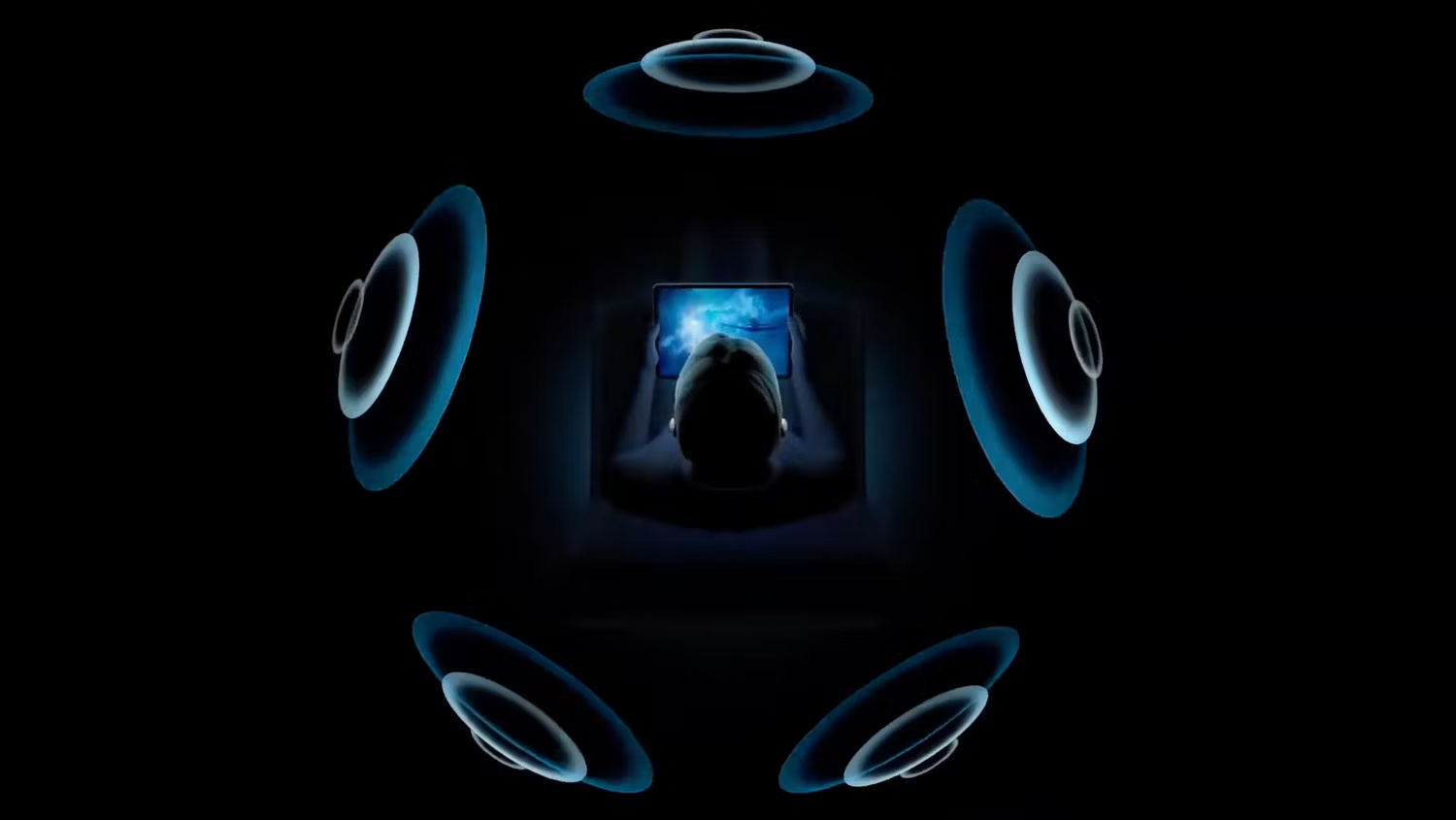What is 3D Positional Audio? Is it different from Spatial Audio?
Have you seen 3D audio listed as an on-device feature on some of the latest tech products?
What is 3D Positional Audio?
3D Positional Audio is an advanced audio feature available on many devices. With this feature, speakers and headphones can adjust the sound to make it appear to be coming from the front, back, above, as well as from the left and right. Essentially, the device creates a 3D sound bubble around you.
The most popular implementation of 3D audio is Dolby Atmos. This is a Dolby audio format that uses top speakers, in addition to speakers behind and next to you. This is a physical sound bubble, not a simulated one.

This is in contrast to Apple's Spatial Audio in AirPods Pro and Max. Using head tracking software, Apple simulates a surround sound experience similar to what you get from physical speakers. So, when listening to content using this feature, it seems like the sound is coming from everywhere around and above you.
Of course, there are many different ways to achieve the same virtual effect. For example, Sony uses object-based technology to map the audio landscape for the PS5's 3D Audio feature, while Windows relies solely on location data for audio to simulate surround sound for the feature. My Sonic.
How does Spatial Audio work?
Spatial Audio combines 5.1 and 7.1 surround sound with Dolby Atmos signals and applies filters to the audio based on location data. These filters provide sound directionality, allowing for a surround sound effect. By adjusting frequencies and using these filters, Spatial Audio can place sounds anywhere in 3D space.
To locate sounds more effectively, Spatial Audio features will often track head and device movements to localize sounds more effectively.
For example, the gyroscope and accelerometer inside the AirPods Pro and AirPods Max track your head movements for Apple's Spatial Audio feature or the object tracking technology in the PS5's 3D Audio. If you're curious, you can read more about Apple's Spatial Audio feature.

This tracking feature combines with device location, which is collected by the same sensors. Therefore, as well as omnidirectional audio, audio can be placed in 3D space relative to your device's location.
So if you move your head or device, the sound will follow. This means that actors' voices or background noises will always sound as if they're in the right position relative to your screen. For example, if you sit down and move your phone to the left but keep your head straight, the sound will sound as if it was also coming from the left.
How to use Spatial Audio or 3D Positional Audio
If you want to use 3D audio, you really don't need to do anything on most devices. When playing compatible audio, this feature is enabled automatically. No need to press buttons or anything like that. This feature will work automatically.
However, to use 3D audio, you will need a compatible device and audio.
- Compatible audio is anything that supports Dolby Atmos or 5.1 or 7.1 surround sound.
- Compatible devices include iPad after 2014 and iPhone after 2016 for Apple Spatial Audio, PS5 for 3D Audio, Windows 10 or Windows 11 computer, or any TV/device that supports Dolby Atmos output.

We've talked a lot about Dolby Atmos, so let's think about it for a moment. While it's often related to a specific speaker setup, many headphones and soundbars can replicate this feature. You can tell if a device supports Dolby Atmos because it will have a logo to confirm it.
The speaker emits sound through specialized drivers in different directions to reproduce sound from many other directions. It's not as effective as a dedicated speaker setup, but the reproduction is quite good.
As mentioned, you'll need to listen through a device that supports Dolby Atmos or a specific 3D or Spatial Audio feature. This includes the Steelseries Arctic Nova 7, AirPods Pro and Max, the PS5's Pulse 3D wireless headset, and any speakers or headphones that support Dolby Atmos.
You should read it
- How to enable Spatial Sound in Windows 11
- Google is about to bring the Spatial Audio feature to Chromebooks
- What is spatial computing? applications of spatial computing
- 9 Best USB Audio Interface
- What's the difference between 16-bit, 24-bit and 32-bit audio?
- Download GOM Audio: A free, lightweight and easy-to-use audio player
 How to open the Library folder on Mac
How to open the Library folder on Mac Steam now prioritizes helpful reviews over useless jokes and memes
Steam now prioritizes helpful reviews over useless jokes and memes 5 reliable sources of slideshow templates for presentations
5 reliable sources of slideshow templates for presentations Instructions for viewing link summary content on Chrome
Instructions for viewing link summary content on Chrome AMD Ryzen 9000 CPU runs on Linux for higher performance than Windows 11
AMD Ryzen 9000 CPU runs on Linux for higher performance than Windows 11 Threads now allows users to save multiple drafts, introducing new tools for creators
Threads now allows users to save multiple drafts, introducing new tools for creators